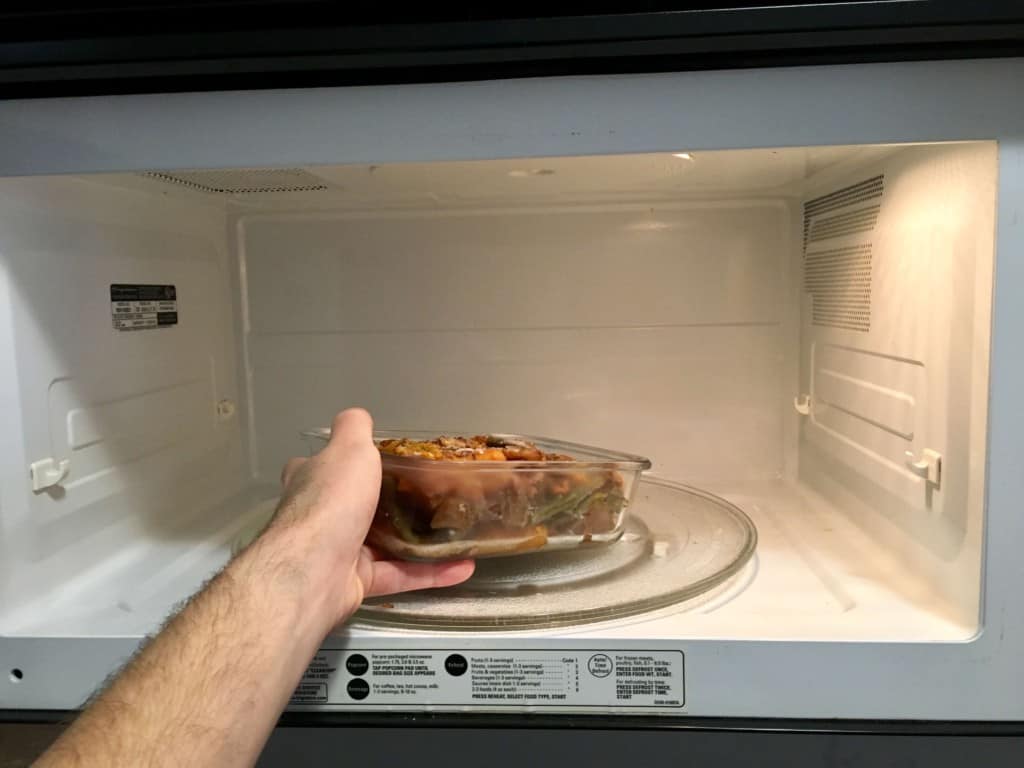
Ah yes, that moment of hesitation before you put a glass container into the microwave. You may have heard horror stories, or worse, maybe you’ve never heard anything about putting glass in the microwave. Let’s fix that with a quick explanation: Can you microwave glass?
In general, most glassware is safe to microwave. However, special glass materials such as glass-ceramics, colored glassware, or glassware with metallic trims, are not microwave-safe unless labeled otherwise.
That’s the high-level summary, but you’ll need to know a few more things before you can clearly identify if a specific glass container is microwave-safe. See the details below for more clarity.
Table of Contents
Can You Microwave Glass?
As we mentioned, most glass containers are safe in the microwave. Glassware is relatively safe and unique in that it is (typically) chemically inert, which means the food in the glass will not react with any chemicals.
Compared to other materials, such as plastic, glass can be a great alternative for holding your food in the microwave. But, there are a few exceptions you’ll want to avoid.
What Types Of Glass Can You Microwave?
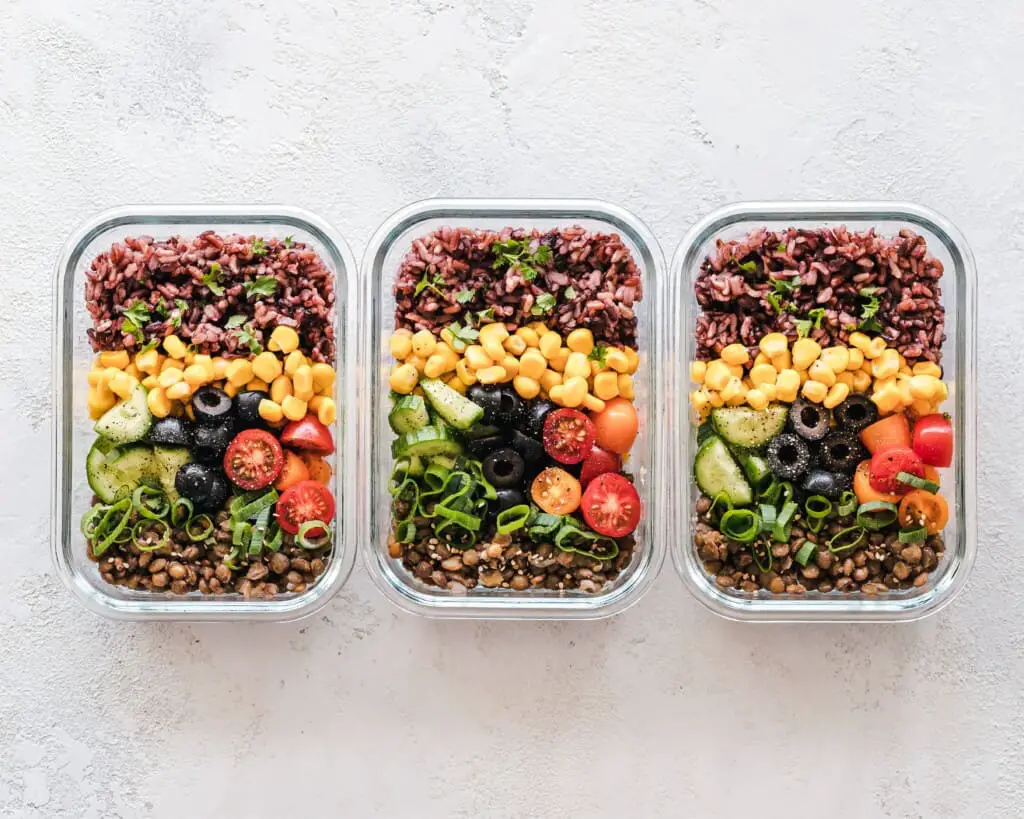
Here’s a quick overview of the types of glass you can and shouldn’t microwave.
| Microwave-Safe | Not microwave safe, if not labeled |
| Pyrex glassware | Glass ceramics |
| Glassware with labels for microwave-safe | Colored glassware |
| Glassware that passes the microwave test (test steps listed below) | Glassware with metallic or foil trims |
| Glassware that doesn’t pass the microwave test |
Now, you’re probably wondering why some of the above glass types should not be microwaved. We’ll cover that next:
Why Not to Microwave Some Types of Glass
Some glasses are labeled “not safe for microwave” due to many different reasons. It could be due to the process of manufacturing, type of chemicals or additives in the glassware, or simply the design or decorations.
Let’s start with glass ceramics. Glass ceramics are typically not microwave-safe. With the mixture of the ceramic clay, when it is heated and then cooled too quickly, the contraction changes the internal bonds which could cause the container to shatter.
Additives in manufacturing, like dyes to add color to the glassware, could also make the glass unsafe for microwaving. When microwaved, some of the chemicals can convert and become harmful, especially when food is directly touching the glassware, this is a food hazard and should be avoided.
For this reason, sometimes your colored glassware will not be safe to microwave.
Glass with metal trimming (even a slight foil-paint on the rims) can light up in sparks in the microwave. These sparks can be dangerous on their own, but can also be extremely dangerous when on fragile material like glassware.
There are also glasses that are not designed to be in the microwave, which may have air bubbles that are not specifically eliminated during production. These are not safe in a microwave because the bubbles expand during heating, which could cause the glass to crack or even shatter.
As a note, there are also certain things you shouldn’t do with glassware in the microwave, regardless of the type of glass. For example, you shouldn’t microwave empty glassware or use glassware to overheat oil or butter in the microwave.
Now that you know of some of the risks of microwaving glass that isn’t designed for that purpose, let’s cover how you can check a container to make sure it is microwave-safe.
How To Check Your Container
When in doubt, always check your container itself. Almost all glass bowls and containers will have an identification sticker, ink, or marking on the product. This can usually be found on the bottom of the container, on the lid (like for Pyrex), or with the product packaging.
The label might be written, and say “microwave safe”, “microwavable”, or something similar. Like this:
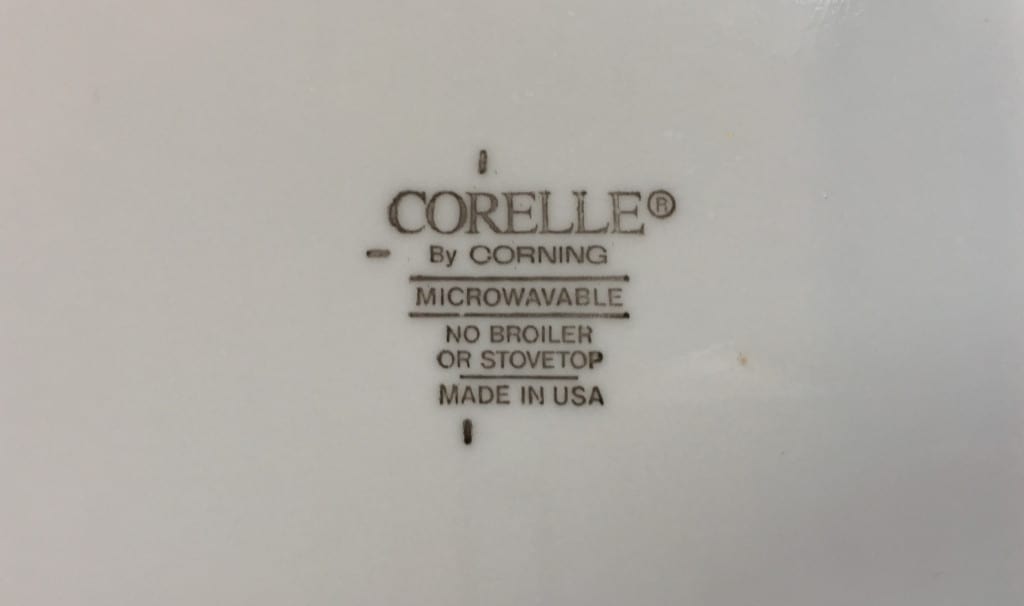
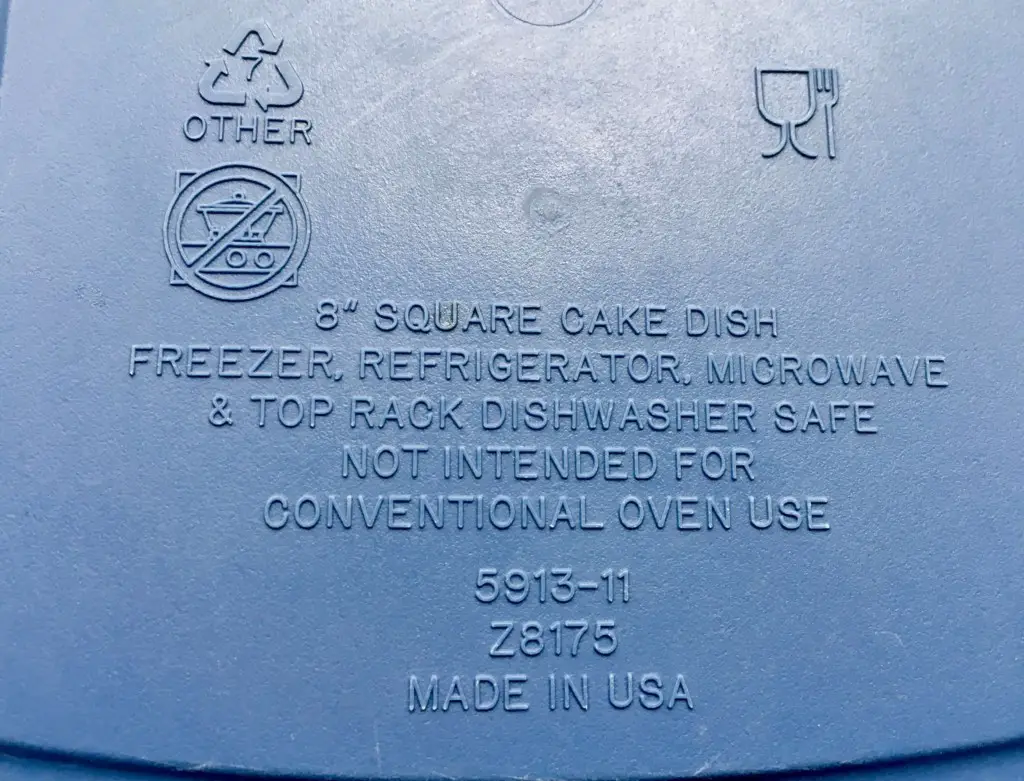
You may also see a symbol that designates “microwave safe”. Below you’ll find an example of the symbol (apologies if the image is difficult to read):
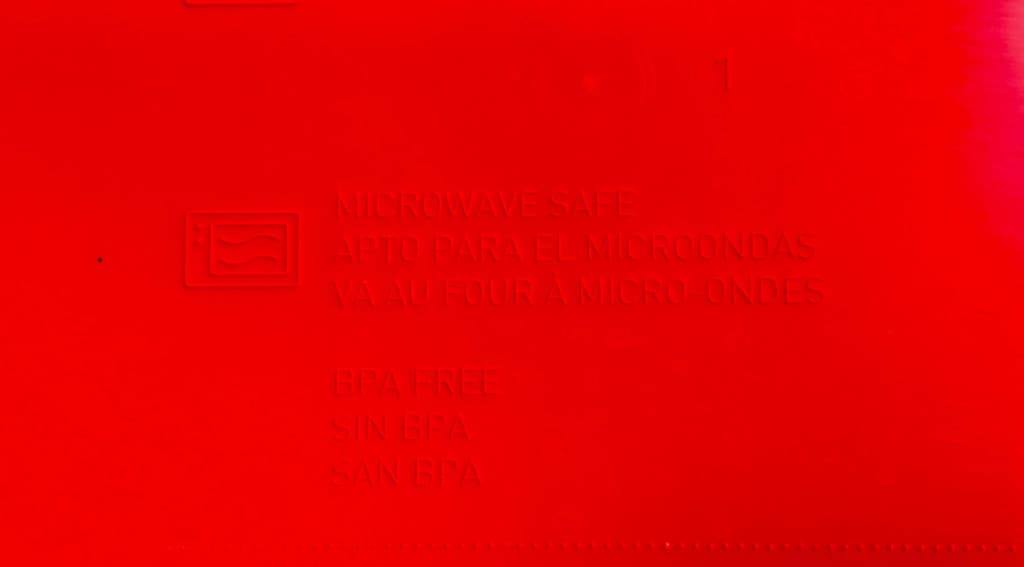
If you don’t see a label, you could also try the below microwave test:
Microwave Test: What if There Are no Labels?
If the glass is simply not labeled or you’ve thrown away the product packaging, or the bottom label has been washed away from wear and tear, you could try a quick experiment to find out whether it’s safe to microwave.
Note: if your glassware is colored, has metallic or foil trim, or if you know it’s glass-ceramic, then you should not do this test. The purpose of this test is to avoid breaking the glass in the microwave, not to test for additives, dyes, etc.
Materials Needed:
- GLASSWARE A: Glassware that you are trying to test.
- CUP B: A cup that you know is Microwave-Safe
- Water
- Microwave
Steps:
- Examine that there are no labels on GLASSWARE A
- Set your microwave at the highest setting. This can be found in power, power level, menu, or in settings.
- Fill CUP B with 1 cup of water
- Keep GLASSWARE A empty.
- Place CUP B and GLASSWARE A together in the microwave. (note: If GLASSWARE A is large enough that it takes up most of the space in the microwave, you can just place CUP B inside of GLASSWARE A. Still do not pour any water into GLASSWARE A.)
- Microwave CUP B (with water inside) and GLASSWARE A (empty) for 1 minute.
- Carefully touch GLASSWARE A, to feel how hot it is.
If GLASSWARE A is hot, it’s a sign that the material is not safe for a microwave. Most glassware that can be microwaved will only be slightly warm to the touch. If the cup of water is hot and the glassware is cool, then the glassware is probably microwave safe.
Note: If CUP B was placed inside the GLASSWARE A, then the area where the pieces were touching each other may be hot. But if the general surface of GLASSWARE A is cool to touch, then it is probably fine to microwave.
Is Pyrex Glass Microwave Safe?
Pyrex glassware is loved by many households for its ability to jump into microwaves and ovens. So yes, Pyrex is microwave-safe, but always be mindful of what you are doing.
General Pyrex Handling Guidelines
According to Pyrex Safety and Usage Instructions, there are some general risks that one must pay attention to when using Pyrex, including the following:
- Sudden temperature change may result in breakage
- Impact on glassware due to dropping or knocking
- Burning due to skin contact with hot bakeware (oven-safe Pyrex bakeware)
Here are more tips for using Pyrex:
Avoid Sudden Temperature Change
With any type of glass, including Pyrex, always try to avoid sudden temperature change. Do not add liquid to a container that has been heated and is still hot.
If the glassware is hot, do not place the glassware directly on a wet surface, on a cold metal surface, in the freezer, or on a wet cloth.
Always allow the glassware to cool on a cooling rack, a potholder, or a dry cloth. Let the container cool before washing under water, refrigerating, or freezing.
No Direct Heat
Never put your glassware or Pyrex in a direct heat source such as a flame, stovetop, broiler, grill, or in a toaster oven.
Add Liquid Before Heating
If you know that your dish will release some liquid while cooking, put a small amount of liquid to cover the bottom of the glassware (PRIOR to cooking in the microwave or oven). This is a preventative measure to avoid hot splashes of liquid shocking the glassware surface.
Always use a Potholder / Protection
For your protection, always use potholder or layers of dry cloth when handling hot containers.
Materials to Never Microwave
In addition to certain types of glassware, always keep in mind that there are plenty of other materials that should NOT be microwaved. For example, foil and metallic containers (such as take-out containers) should never be microwaved.
Here’s a quick list as a reminder:
DO NOT MICROWAVE List
- Foil or Metallic material
- Brown paper bags
- Dairy containers
- Styrofoam cups and plates
- Some plastics (avoid unless marked “microwave-safe”)
- Plastic wrap unless labeled that it is microwave safe
This list is not meant to be exhaustive, but hopefully, it will give you an idea of the types of items you should keep out of your microwave.
In Conclusion
If you have glassware that has a label that indicates that it’s microwave-safe, you are good to go! If you can’t seem to find the label, try the microwave test.
Be sure to avoid microwaving any products that have metallic trimming, dye (such as colored glassware), are made of ceramic-glass, or materials that heat up dramatically when microwaving.
And if you’re in doubt, then use a different container that is clearly labeled as microwave-safe. It’s always better to be safe than sorry.
